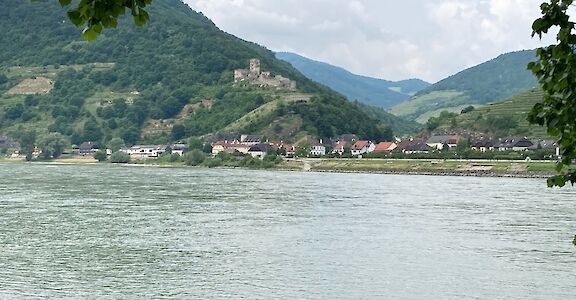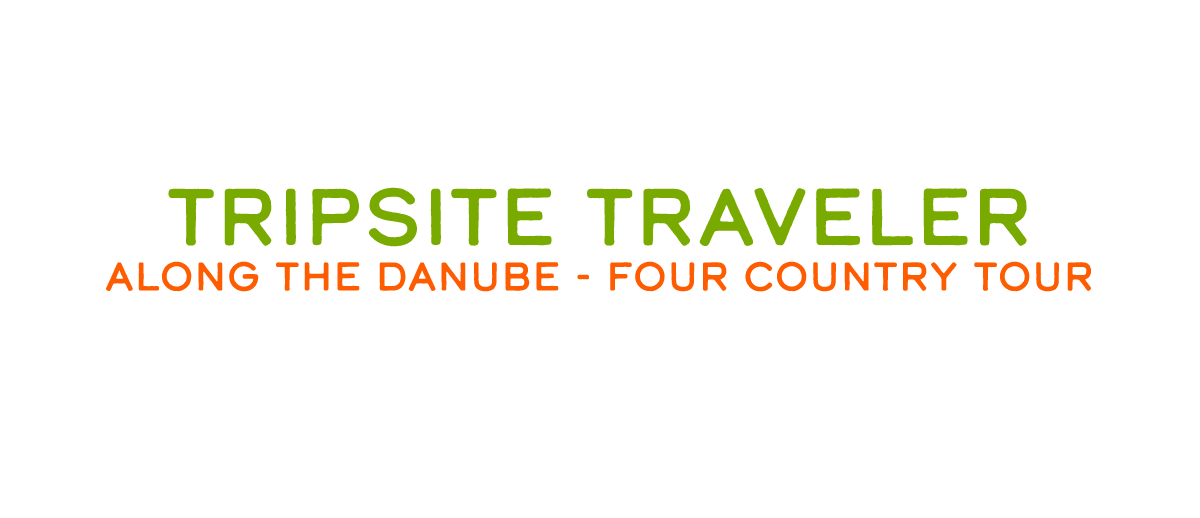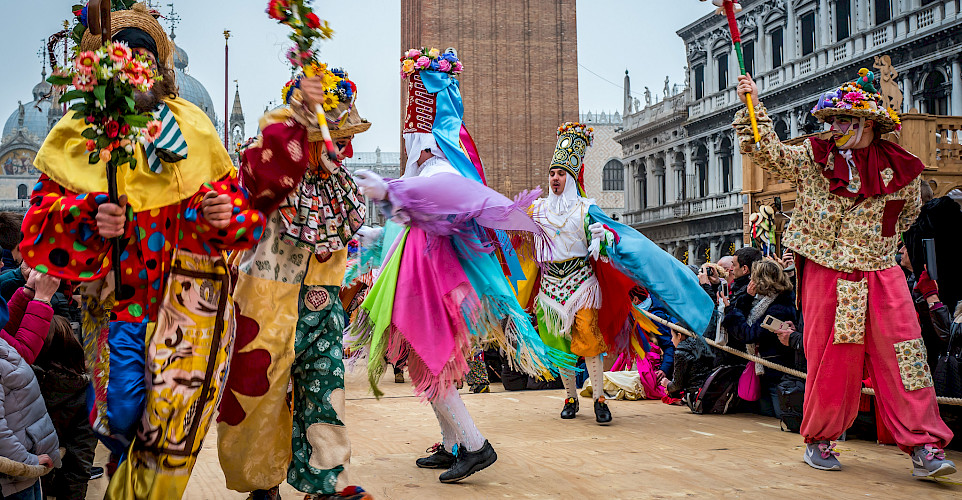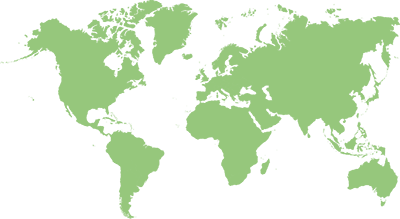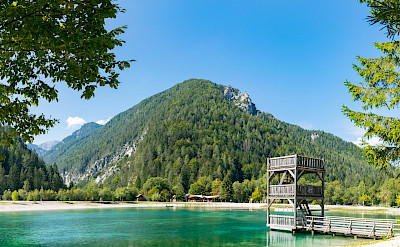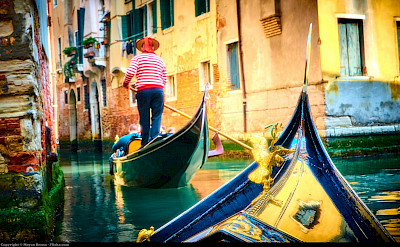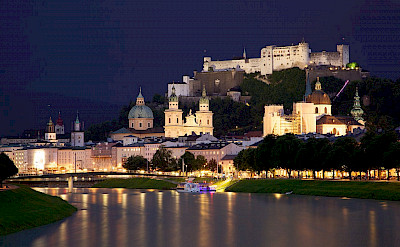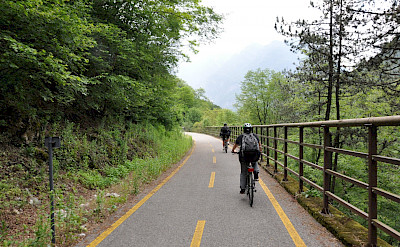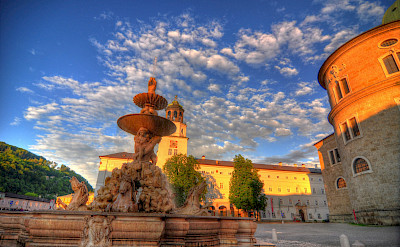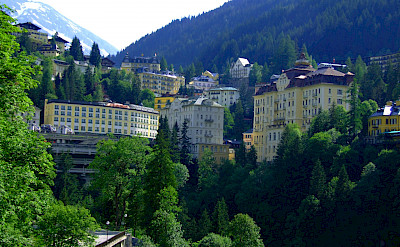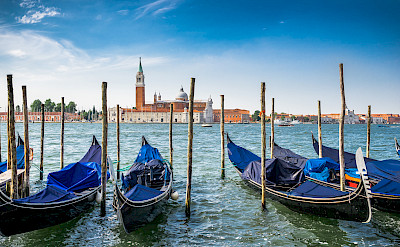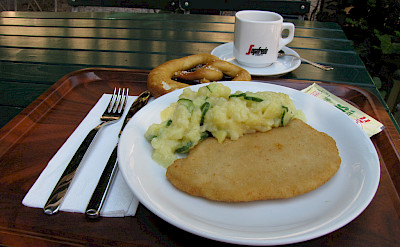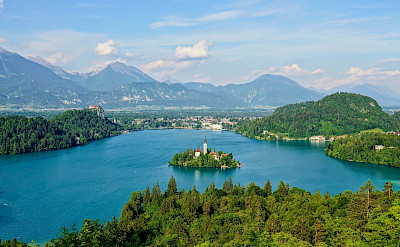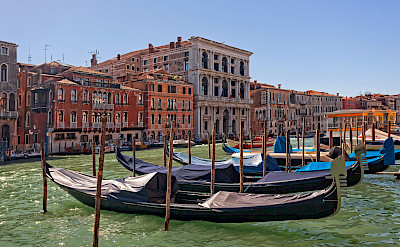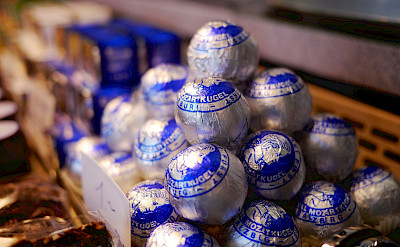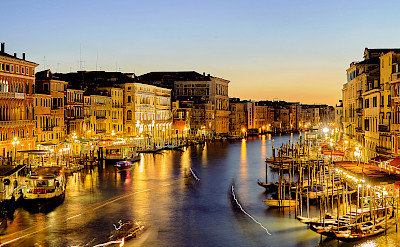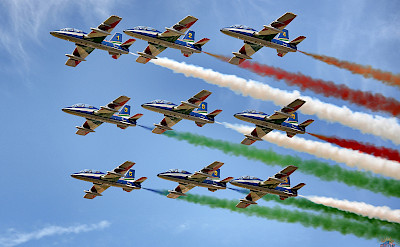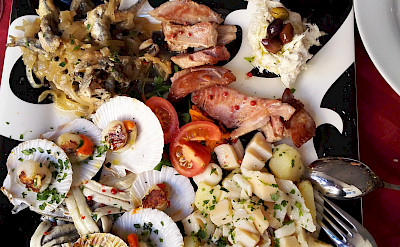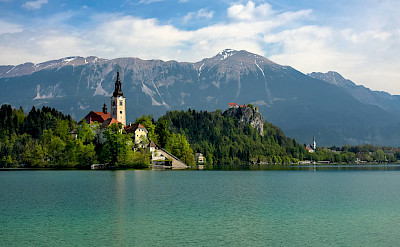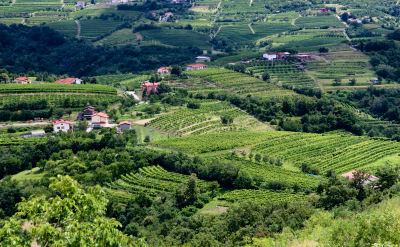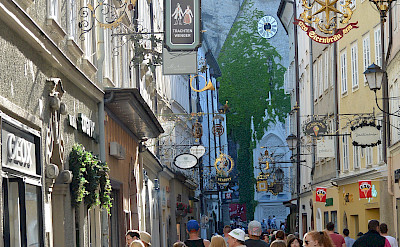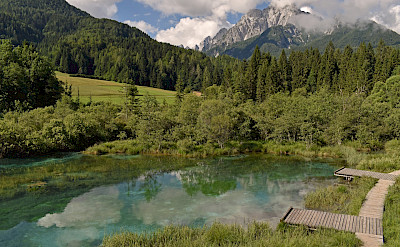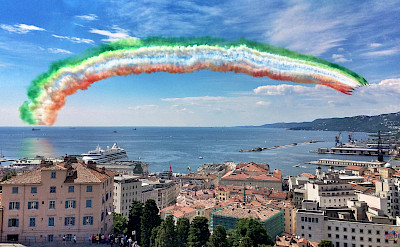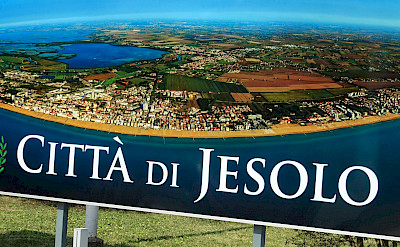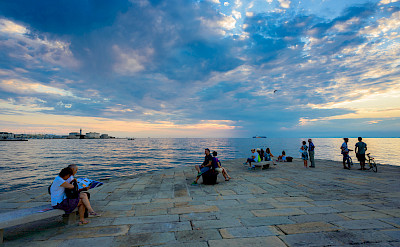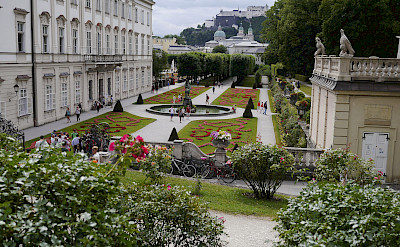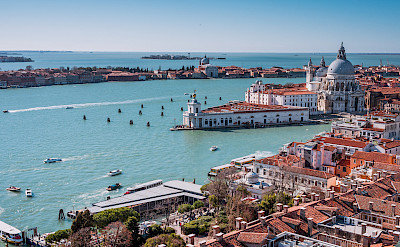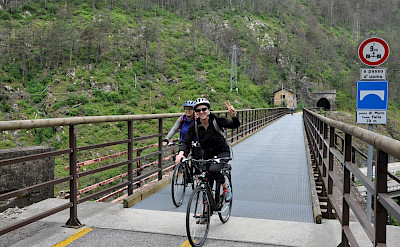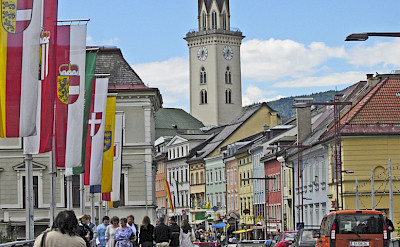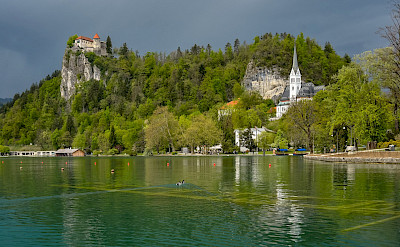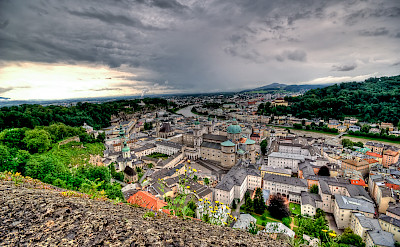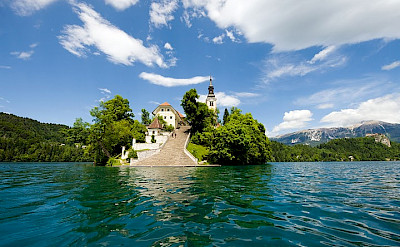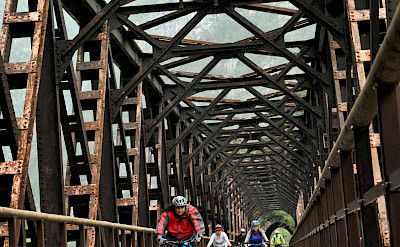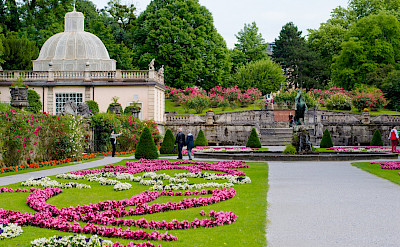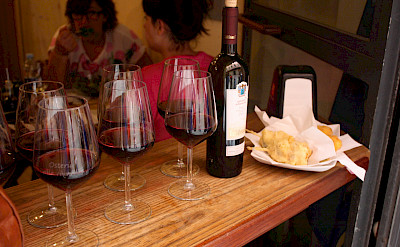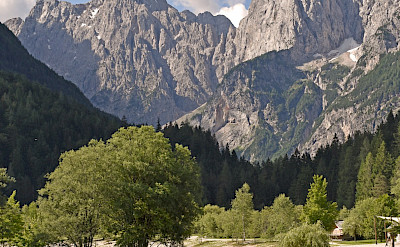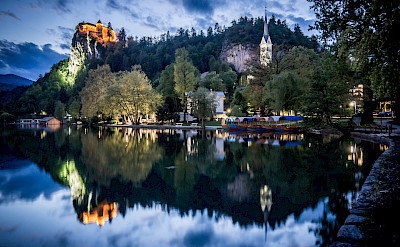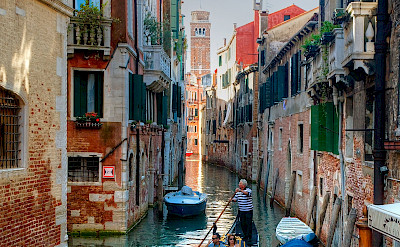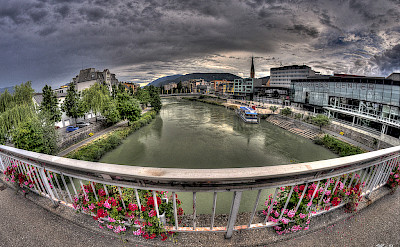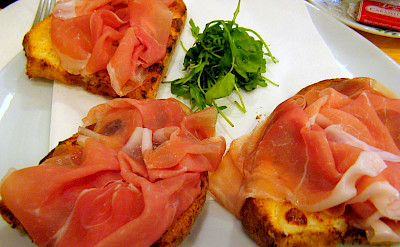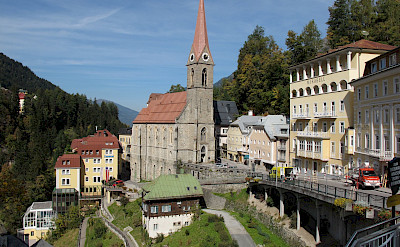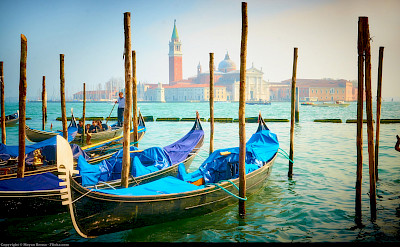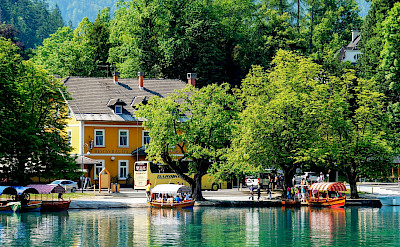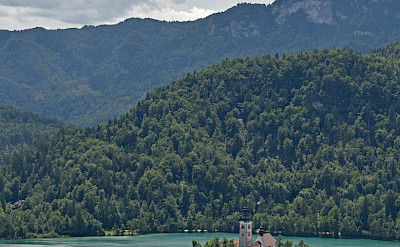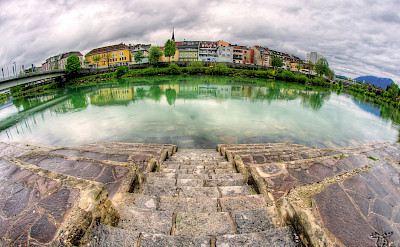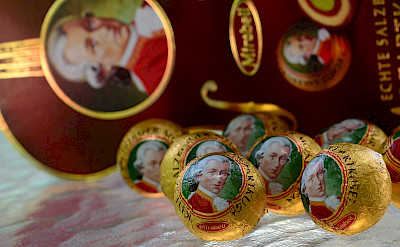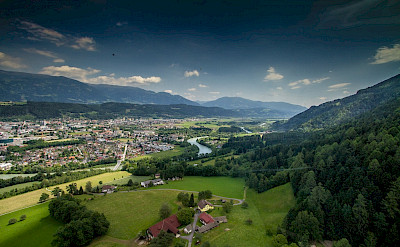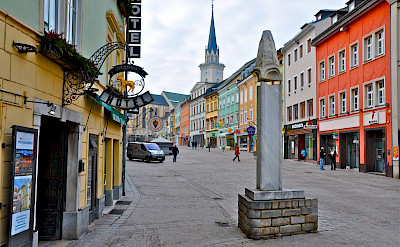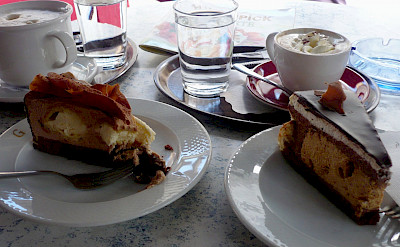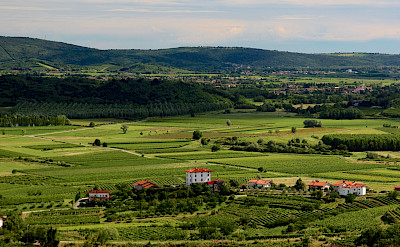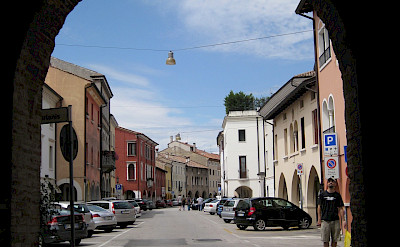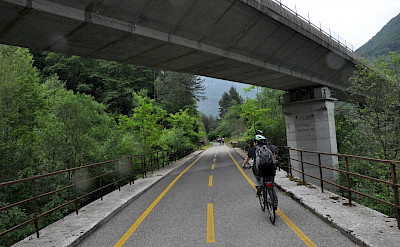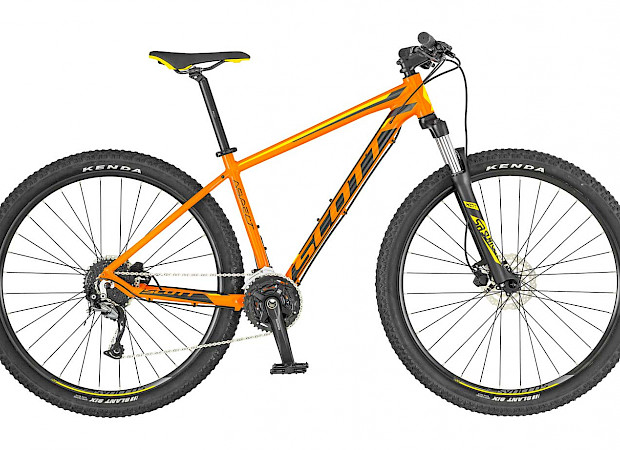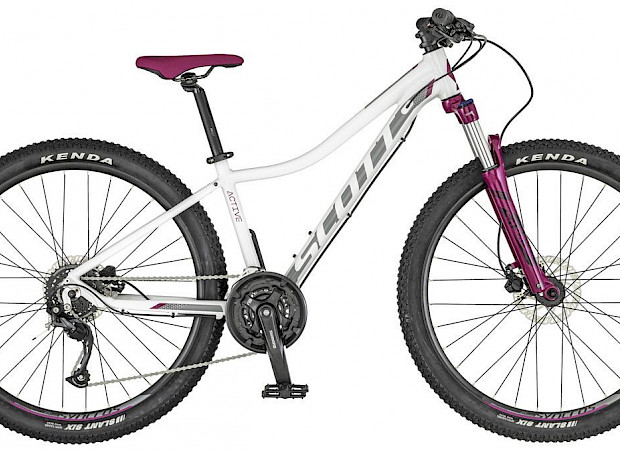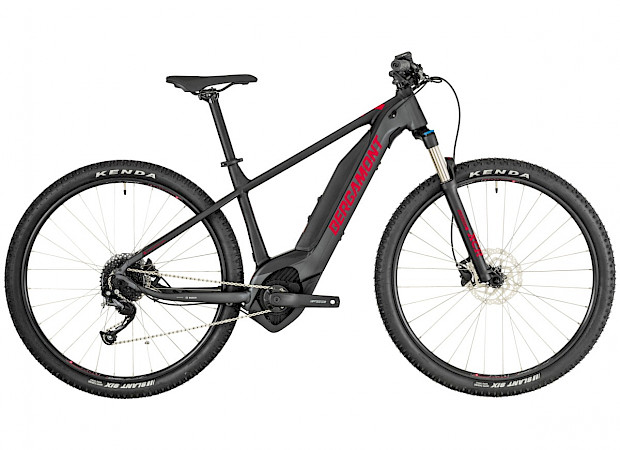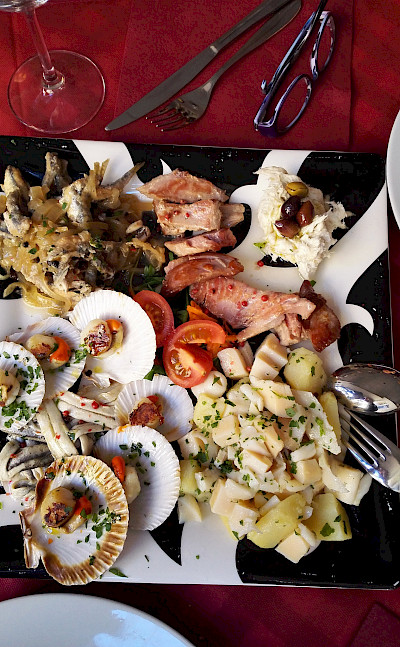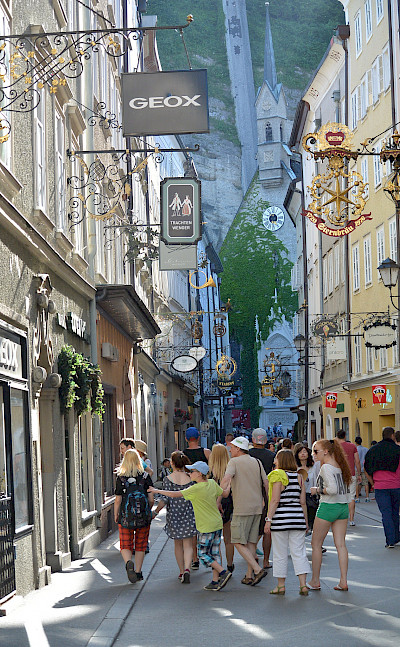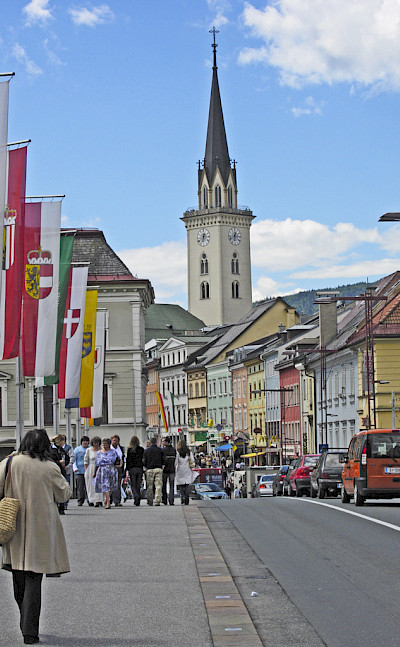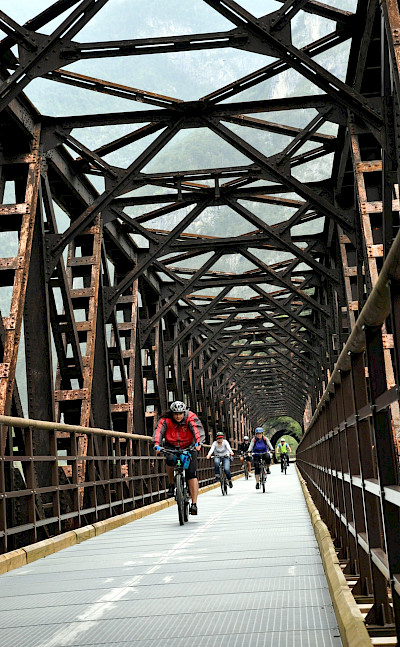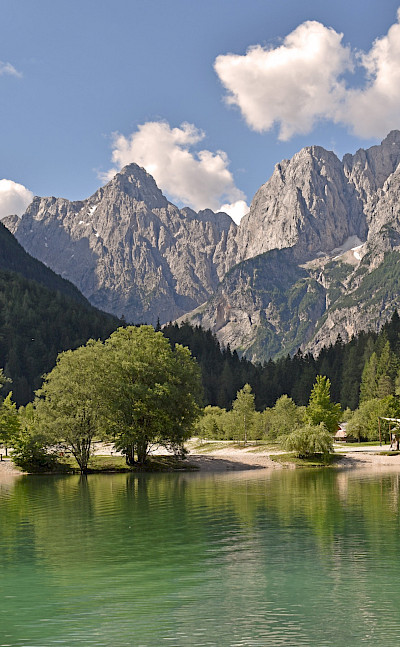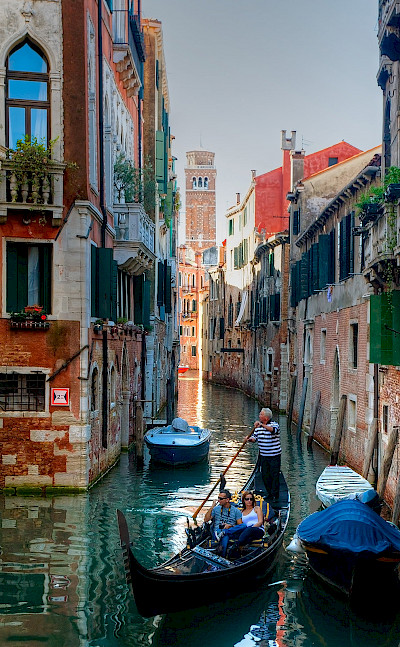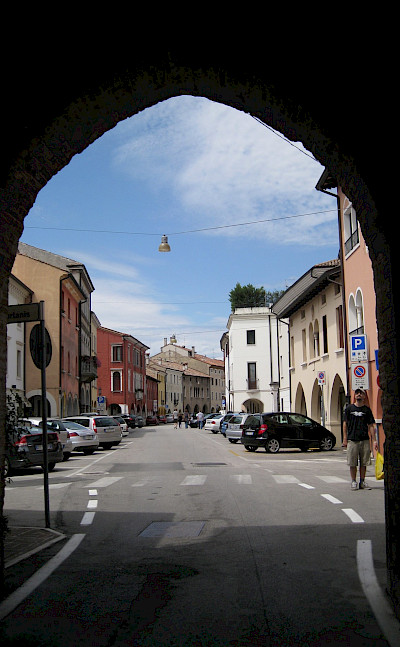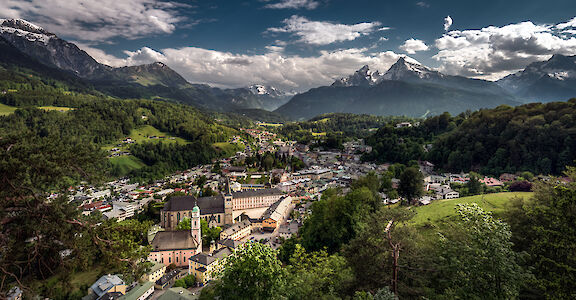Salzburg to Venice
Austria, Italy, Slovenia Bike Tours
Bike Austria, Slovenia, and Italy from the mountains to the Adriatic Sea
- Tour Type
- Skill Level
- Length8 days
- Prices from€1879 Rates
- Book This Trip
Overview
This impressive bike tour from Salzburg to Venice spreads across three different European countries, Austria, Slovenia, and Italy. Each country is positioned at the crossroads of diverse and strong historical and cultural influences.
En route, you witness first hand how the landscape transforms, leading from the foothills of the Alps, towards the warm Adriatic Sea.
Between the two cities, there are 7 days of cycling, featuring wonderful nature, culture, Mediterranean food, and excellent wine, proudly provided by local (yet globally recognized) wineries from Goriska Brda, Italian Colio, and Slovenian Karst, a land often known as the Slovenian Tuscany.
Highlights
- Salzburg
- Venice
- Fusine Lakes
- Kranjska gora
- Bled
- Zelenci Nature Reserve
- Radnova, beautiful Alpine Valley
Europe at its best!
This tour can also be arranged in the opposite direction.
Don't forget to check out all our bike tours in Italy, Slovenia, and Austria!
Itinerary
We advise booking an extra night in Salzburg since day 1 is the start of cycling.
Day 1: Salzburg - Bischofshofen, 35 mi. (57 km)
Day 2: Bischofshofen - Bad Gastein, 32 mi. (50 km)
Day 3: Bad Gastein - Spittal an der Drau, 29 mi. (47 km)
Day 4: Spittal an der Drau - Villach, 25 mi. (40 km)
Day 5: Villach - Kranjska Gora, 28 mi. (45 km)
Day 6: Kranjska Gora - Bled, 24 mi. (39 km)
Day 7: Bled - Brda (Alpe Adria), 29 mi. (47 km)
Day 8: Departure
All distances are approximate. Due to unforeseen circumstances such as weather conditions or provisions issued by local authorities, the itinerary may be subject to some changes before and/or during your holiday. For example, along the route, you may find temporary deviations/detours necessary due to roadwork that will not be reflected on your maps or route descriptions.Day 1: Salzburg - Bischofshofen, 35 mi. (57 km) | Elevation: 480 m
Salzburg has one of the best-preserved city centers north of the Alps and is listed as a UNESCO World Heritage Site for its baroque architecture. It is also, of course, the birthplace of the 18th-century composer Wolfgang Amadeus Mozart, who some claim is the greatest musician ever born. The city is dominated by the well-preserved Hohensalzburg castle, the main attraction of the city. This represents Europe’s largest fortification and probably the most beautiful. Since this tour does not include the first overnight in Salzburg, we strongly advise that you book this so as to enjoy more time in the city of music.The route delightfully leads on a leisurely ride southwards next to the Salzach River, then into the mountains of Salzburg’s Limestone Alps, past numerous natural monuments, high rock faces, and impressive gorges.
This first day is packed with attractions. Glasenbachklamm, the canyon-like valley, is located right at the gateway to the city of Salzburg. The gorge became famous for the discovered fossilized remains. The outstanding reputation of beer brewed by Bräustübl Kaltenhausen is due to the countless travelers who have stopped by over the centuries and spread the word. Those who already miss Christmas can stop at the Silent Night Museum in Hallein, where original manuscripts and documents attest to the creation of the world’s most famous Christmas song, Silent Night! Salt is a big deal in Salzburg, as the city features the world’s oldest salt mine: Bad Dürrenberg.
The Salzach river cut its way through the northern Limestone Alps and created a gorge known as Salzachöfenor (or alternatively Salzachklamm). The route leads along and above the gorge to Pass Lueg. Just before reaching the final destination, there are two more attractions to visit, Eisriesenwelt, the world's largest ice cave, and the Hohenwerfen Castle, which sits proudly at the top of a rocky, 113 meters high dome. In Werfen, there is something else also reaching up to the sky, the Obauer Restaurant, which is one of the best in Austria.
Day 2: Bischofshofen - Bad Gastein, 32 mi. (50 km) | Elevation: 790 m
On the second cycling day, the route initially leads to Schwarzach through reservoirs along the middle Salzach river and then takes a climb only to enter the Gastein valley later on. The final destination for the day is the town of Bad Gastein, a beautiful place featuring the Gastein Waterfall at its very center. The mountains of the Salzburg Alps are your constant backdrop. In the Gastein valley, the glaciated peaks of the Hohe Tauern mountains can be seen. Other points of interest mainly include various thermal spas in Dorfgastein, Bad Hofgastein, and Bad Gastein. Entrische Kirche, the largest natural cave in Salzburg’s Central Alps, is a natural monument and a “place of natural power”.Day 3: Bad Gastein - Spittal an der Drau, 29 mi. (47 km) | Elevation: 400 m
At the end of the Gastein valley, the bikers hop on the train for a short ride through the tunnel under the Alps (Tauernschleuse). After that, the route continues through the Carinthia region on the southern side of the Alps. The route leads through the Lower Mölltal valley, which is nestled amidst some 3000-meter mountain peaks.Outstanding attractions and rewarding stopping points await on the way, including the wonderful adventurous gorge called Groppensteinschlucht along the Mallnitzbach, the Obervellach town center, the Falkenstein castle, and the Barbarossa Canyon. At the county seat of Spittal, one can find a beautiful renaissance castle by the name of Porcia, which was built in the 16th century in the Italian palazzo style and is sometimes described as the most beautiful Renaissance building north of the Alps.
Day 4: Spittal an der Drau - Villach, 25 mi. (40 km) | Elevation: 70 m
From Spittal, the tour runs along the Drau Bike Path, which is well developed and clearly marked. For most of this stage, you will ride along the right river bank. Many highlights can be seen on the way, mainly those interesting to history enthusiasts and nature lovers, such as the excavations of an early Christian church outside Molzbichl in the lower Drautal valley. The Carantana museum, church, and archaeological open-air exhibition ground form a remarkable ensemble, which gives the visitor an impressive and striking insight into the Early Middle Ages.If in somewhat low spirits, the hot springs in Villach will make you feel rejuvenated. The city, which is quite a gem, captivates a visitor with its easy-going, Mediterranean beat. Here, you can enjoy some truly memorable moments while exploring the old town, strolling through the narrow streets, admiring the modern architecture, watching people at one of the numerous city squares, sitting beside the Drau river, visiting the interesting shops, and tasting the local cuisine.
Day 5: Villach - Kranjska Gora, 28 mi. (45 km) | Elevation: 550 m
The tour mostly follows the river Gail along the southern side of Mt Dobratsch, with a good part of the route running through the Dobratsch Nature Park. Cycling through small villages, the tour gradually approaches the Italian border, finally crossing it at Thörl-Maglern. The beautiful, unique Gothic frescoes inside the Church of Saint Andreas are extremely interesting in terms of the crucifixion symbolism.Following an abandoned railway line just a few kilometers beyond the border, the tour reaches the town of Tarvisio, one of Friuli Venezia Giulia’s most important ski areas and mountain resorts. Surrounded by the Julian Alps and rich in wide valleys and woods, the town has a modern look yet an ancient soul, full of traditions that are well worth discovering. However, there will be enough opportunity to enjoy Italy at the end of the tour, which now turns towards Slovenia.
Two beautiful glacial lakes can be found just outside Tarvisio. The valley of the Fusine lakes is one of the most fascinating places in the Italian region of Friuli Venezia Giulia, and the visit takes only a short detour. After crossing the border in Rateče, Slovenia, the route passes the entrance into the beautiful glacial valley of Planica, which serves as a venue to ski flying competitions, and reaches the Zelenci springs nature reserve, one of the sources of the Sava river, which can be found just next to the road. The springs are beautiful in all seasons and at any time of the day, especially at sunset.
The last leg of the tour for the day passes the famous FIS ski slope of Podkoren before reaching the alpine village of Kranjska gora, a very popular ski and outdoor resort situated at the foot of the Julian Alps.
Day 6: Kranjska Gora - Bled, 24 mi. (39 km) | Elevation: 330 m
On the sixth cycling day, the tour heads on to Lake Bled, the most famous tourist attraction in Slovenia. From Kranjska Gora, a pleasant cycling road leads to another alpine village of Mojstrana, where the tour enters what is arguably one of the most beautiful alpine valleys in Slovenia, the Radovna river valley. Since the area is part of the Triglav National Park, mass tourism is partially limited here. The valley is very popular due to its beautiful unspoiled nature, with one of the most imposing parts being the 1.6 kilometers long Vintgar gorge. Reaching the final destination of the day, it would be a pity not to visit the famous island in the middle of Lake Bled, featuring a church, or taste the famous Bled cake.Day 7: Alpe Adria, 29 mi. (47 km) | Elevation: 640 m
One of the most beautiful views of the lake opens from the railway station located just above it, where you will board a train again to travel from the heart of the Alps to the warm Mediterranean area of the Central Soča valley. The Bohinj railway, which connects Jesenice in Slovenia with Trieste in Italy, was built from 1900 to 1906, during the Austria-Hungary era, as part of the new strategic railway called Neue Alpenbahnen, to connect the western part of Austria as well as that of southern Germany with the then Austro-Hungarian port of Trieste. The scenic ride, which features numerous views of gorges and plains, runs through multiple tunnels, the longest one being over 6 kilometers long.You disembark the train in Kanal, a medieval town with a rich cultural heritage situated on the two banks of the Soča river, which are linked by a bridge. The Soča, which has a distinct emerald green color and is considered one of the most beautiful rivers in Europe, is at its most beautiful in the gorge below the town. The Soča valley is the first destination in Slovenia to earn the title of the European Destination of Excellence (EDEN), due to its sustainable development in tourism. The responsible approach is also reflected in the cycling trail arranged along the river and the railway routed along the accumulation lake and running all the way to the Solkan bridge, which offers a view of Mt Sveta Gora. The tour passes the old railroad bridge featuring the largest stone arch in the world.
Passing through the town of Solkan, the Soča flows towards Italy, leaving behind the Alps and the Pre-Alpine world. Just like the Soča, the trail here leaves Slovenia only to enter it once again at the city of Gorizia, having briefly entered Italy turning towards Collio and finally towards the Goriška Brda region.
Day 8: Departure, transfer to Mestre
Your tour comes to an end after breakfast in Brda. A transfer to Mestre, a suburb of Venice is included.Be sure to check out all of our bike tours in Europe or look at our featured bike trips, specials, and news.
Map
Hotels & Bikes
3 and 4-star hotel and pensions. An upgrade is possible based on availability.
Bicycles
Inclusions
What’s Included
- Self-guided
- Accommodations for 7 nights in 3 or 4-star hotels/lodging houses
- 7 breakfasts
- Free gift
- Luggage transfer
- Scott Contessa 710/720 or Scott Aspect 940 with front suspension, lock, helmet, water bottle, & repair kit (9-day rental)
- Navigation pack: Ride with GPS Tour Experience package including detailed guide and complete off-line navigation data (tracks, maps, POI) and online briefing
- Final transfer from Brda to Venice/Mestre or Marco Polo Airport
- Emergency hotline during cycling
- Guided
- Accommodations for 7 nights in 3 or 4-star hotels/lodging houses
- 7 breakfasts & 7 dinners, featuring regional cuisine
- Snack package
- Free gift
- Fully qualified & experienced bike guide for the duration of your trip
- Luggage transfer
- Scott Contessa 710/720 or Scott Aspect 940 with front suspension, lock, water bottle, helmet, & repair kit
- Extensive tour booklet
- Transfer from Brda to Venice/Mestre or Marco Polo Airport
- Emergency hotline during cycling
What’s Not Included
- Any meals not indicated as included
- All beverages with included meals
- Arrival transfer to the first hotel
- Cycling guide & support vehicle on self-guided tour dates
- Cycling guide on non scheduled guided tour dates (can be booked for supplement)
- Support vehicle on scheduled & non scheduled guided dates (can be booked for supplement)
- Bike Protection
- Travel Insurance
Dates & Pricing
Dates & Pricing
2024
Not being offered. Please contact us for alternatives.
Extra Options
Rental options
Panniers (set of two) $ 100 £ 52 $ 88 € 59 kr 9045 ₪ 243 ¥ 9910 Mex$ 1097 NZ$ 109 NOK 708 zł 261 S$ 87 kr 702 $ 64 Electric bike $ 186 £ 96 $ 165 € 110 kr 16864 ₪ 453 ¥ 18477 Mex$ 2045 NZ$ 202 NOK 1320 zł 487 S$ 163 kr 1309 $ 119 Supplements
Guide (cost to be shared among participants) $ 5044 £ 2603 $ 4,462 € 2982 kr 457160 ₪ 12287 ¥ 500885 Mex$ 55437 NZ$ 5488 NOK 35792 zł 13189 S$ 4412 kr 35492 $ 3,239 Support van (cost to be shared among participants) $ 3908 £ 2017 $ 3,457 € 2310 kr 354138 ₪ 9518 ¥ 388009 Mex$ 42944 NZ$ 4251 NOK 27726 zł 10217 S$ 3418 kr 27494 $ 2,509 Extra nights
On request Please Note
- Rates are per person, based on double occupancy
- Tour prices are based on the fuel costs at time prices are set, often months or years in advance. In rare cases, additional fees may apply for fuel cost increases.
- Information to read before you book
- We recommend purchasing trip insurance
- Please see our FAQ
Extra Info
Skill Level — Moderate
This is a moderate self-guided with support or guided tour that covers 461 km with 3.235 m total climbing. Electric bikes are available.
Airport Info
Salzburg has its own international airport. The airport is located 4 km from the city center. As alternatives, Munich airport is 145 km away from Salzburg and Vienna Airport is 390 km away. The most convenient scenario is to fly into Salzburg and out of Venice.
Local Travel
Public buses go at regular intervals (10-20 minutes) between Salzburg Airport, Salzburg main railway station, and the city center. A taxi stand can be found both directly in front of Salzburg main railway station and the airport terminal.
Climate
Please check local conditions before your arrival.
Recommended
It is advisable to book an extra night in Salzburg upon your arrival as this tour itinerary has Day 1 as the first day of biking. You will want to explore Salzburg!
Remarks
If you are considering a self-guided tour, you should take the following into consideration to make sure this type of trip is the right fit for you. Our self-guided tours are ideal for individuals who have prior experience in self-guiding tours and have successfully navigated with a GPS device. Having a basic understanding of bikes is essential. This includes being comfortable with basic bike maintenance tasks such as fixing flat tires or making minor adjustments. If you think you don’t fit in this description, maybe a guided cycling tour would be a more enjoyable option for you.
Important to know
Travel Documents
It is each traveler's responsibility to ensure that you are in compliance with the country or countries you plan to visit. This includes and is not limited to passport validity, visa requirements and acquisition, blank passport pages required for your destination (s), etc.
US citizens: A good website to research the requirements of the Schengen Agreement and entry into other countries is travel.state.gov.
Non-EU and EU residents: Please research the requirements of your country of residence for international travel and your destination country or countries.
*Important note: Please check on the European Travel Information and Authorization System (ETIAS) status as once implemented, this will be required to visit any of the 26 Schengen-member countries for tourism, business, medical, or transit. This is an additional check on security rather than a visa.You can also use this field (which has formatting capabilities) to add other information that is needed such as
Tour Operator
This tour is run by Bike Good Place.
We value the strong relationship we have with our local partners and the services we provide.
We are not a broker.
We do not inflate tour prices.
We are simply travelers helping travelers.Would you like to learn more About Us? How about What Makes Us Different than other companies?
Photos
Have you been on this tour?
Please leave your feedback

